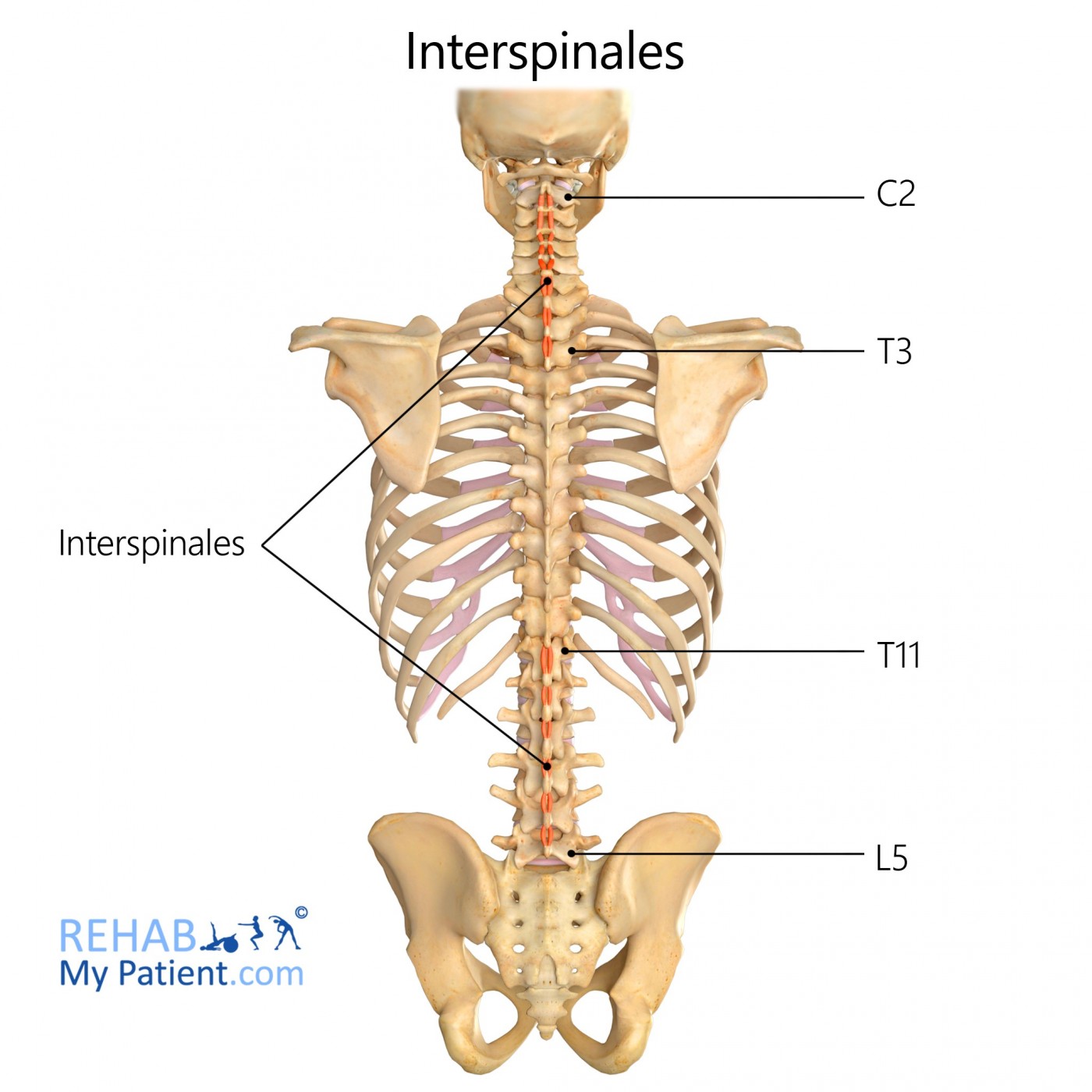Interspinales
Opublikowano dnia 24th Jul 2020 / Opublikowano w: Kręgosłup lędźwiowy

General information
Interspinales muscles are short, paired muscles sitting in the deepest layer of the intrinsic back muscles. This group of muscles consist of the interspinales cervicis, thoracis and lumborum, which get their name based on their location along the back.
Literal meaning
Between the spines.
Interesting information
The interspinales are only well developed in the cervical and lumbar regions, despite them being present across the whole vertebral column. In the thoracic region these muscles are either underdeveloped or absent.
Although the interspinales muscles assist in back extension along with the other intrinsic back muscles, their most significant function is stabilising the spine during motion, as well as keeping the body in normal posture.
Origin
Interspinales cervicis: Superior aspect of spinous processes of vertebrae C2-C7.
Interspinales thoracis: Superior aspect of spinous process of vertebrae T2, T11 & T12 (variable).
Interspinales lumborum: Superior aspects of spinous processes of vertebrae L2-L5.
Insertion
Interspinales cervicis: Inferior aspect of spinous processes of vertebrae C1-C6.
Interspinales thoracis: Inferior aspect of spinous processes of vertebrae T1, T10 & T11.
Interspinales lumborum: Inferior aspects of spinous processes of vertebrae L1-L4.
Function
Extension of cervical and lumbar spine.
Nerve supply
Posterior rami of spinal nerves.
Blood supply
Interspinales cervicis: vertebral artery, deep cervical artery, occipital artery, transverse cervical artery.
Interspinales thoracis: superior intercostal artery, posterior intercostal arteries, subcostal artery.
Interspinales lumborum: lumbar arteries.

Relevant research
None
Interspinales exercises

Back extension standing unsupported
Standing up straight, extend your back slowly and carefully leaning backwards. Placing your hands on the small of your back can provide additional support if needed.
Zapisać się
Zarejestruj się już teraz, aby skorzystać z bezpłatnego okresu próbnego!
Zacznij korzystać z Rehab My Patient już dziś i zrewolucjonizuj proces przepisywania ćwiczeń, aby zapewnić sobie skuteczną rehabilitację.
Rozpocznij 14-dniowy bezpłatny okres próbny